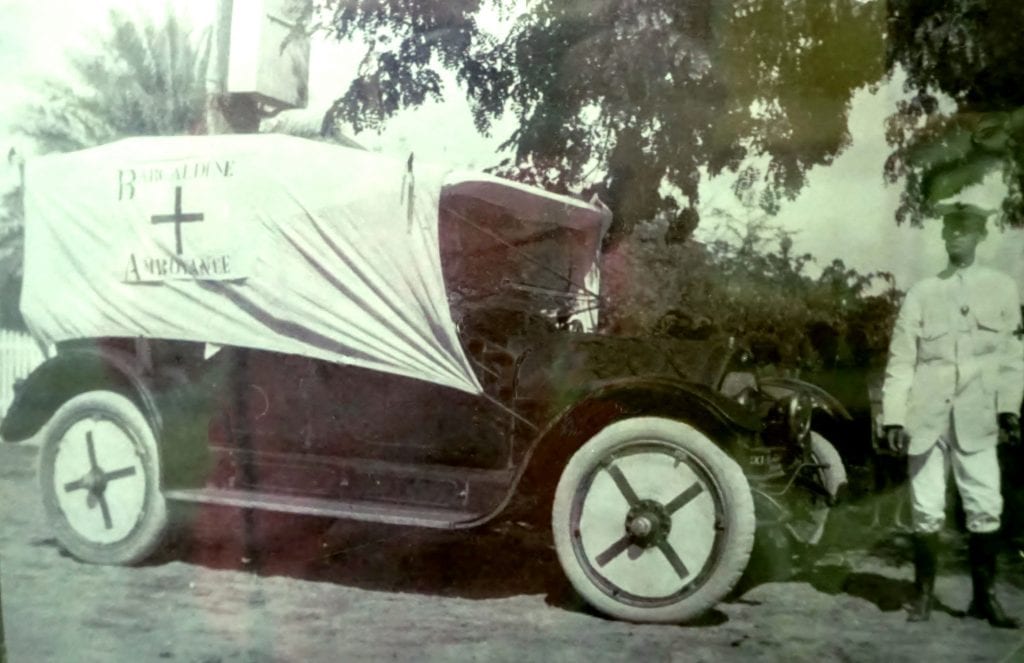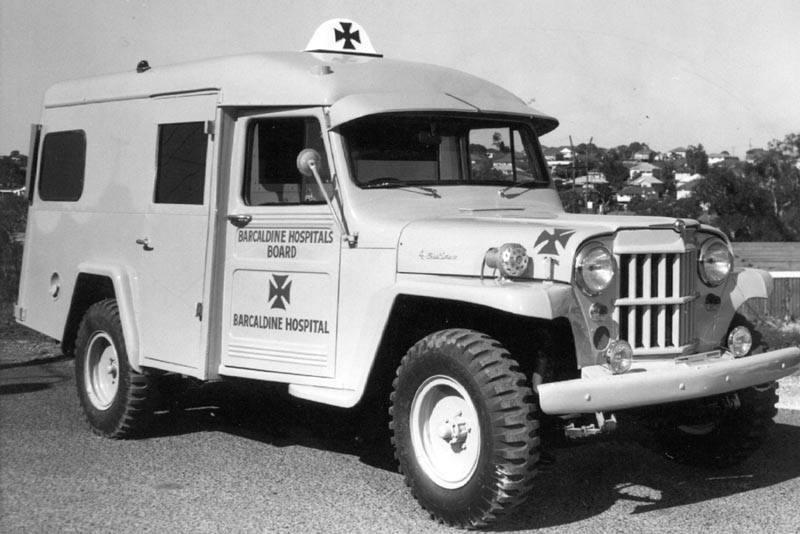Coaches
Barcaldine was chosen as the centre of Cobb & Co.’s western coaching system. From 1886 to 1897, the office was situated behind the Shakspeare Hotel, on the corner of Beech and Ash Streets.
After the drought of 1902, when the bank refused credit to Cobb & Co., W. Cameron’s Royal Mail Coaches took over the Blackall / Barcaldine / Aramac / Muttaburra route while Cobb & Co. reorganised its other services.
The last coach left Barcaldine for Aramac on 14th November, 1914.
Agents for Cobb & Co Coaches in 1907-1909 were Harry W. Webber, Commercial Hotel, and in 1912, Mrs M. O’Connell, West End Hotel.
Competitors from 1907 onward was Mrs J. W. Doran’s line of Royal Mail Coaches. They ran from Barcaldine to Aramac to Torren’s Creek. Blagden’s Coaches operated on the Muttaburra run and Dixon’s Coaches on the Blackall run. Barcaldine to Winton Coaches via Aramac & Muttaburra left on Wednesday at 5am, arriving in Winton on Thursday at 10pm.
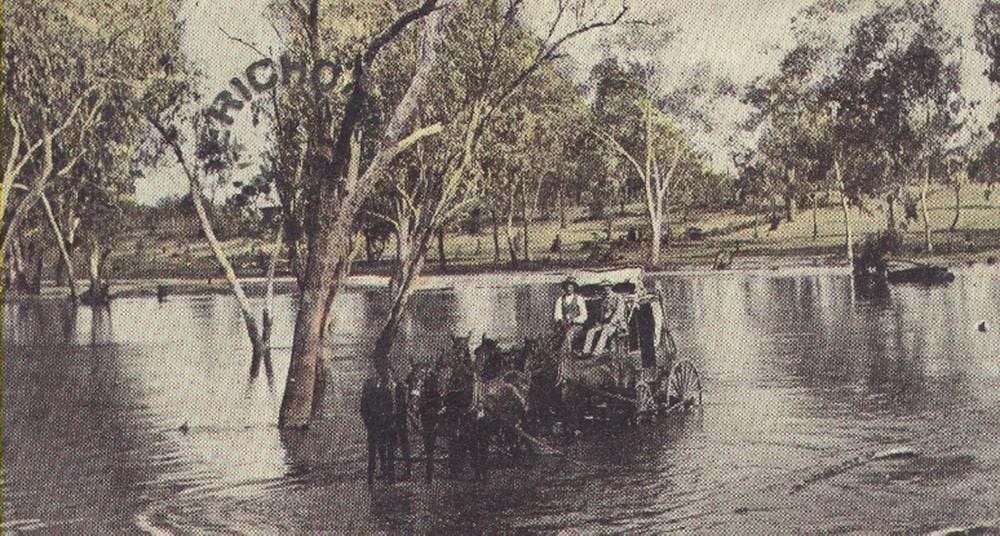
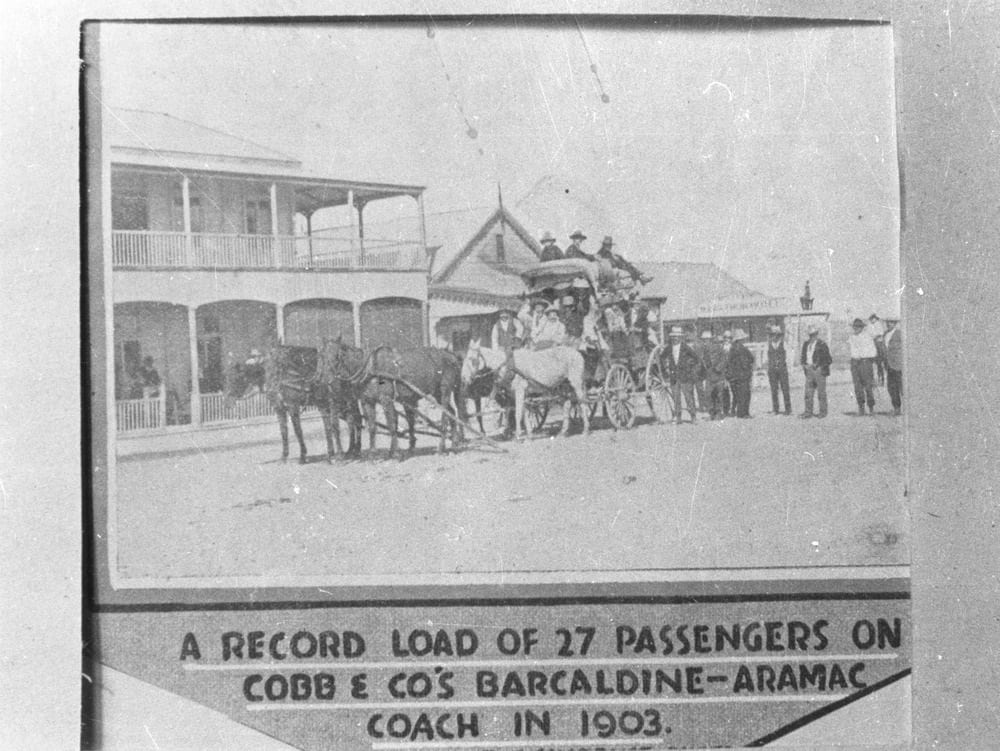
Barcaldine – Aramac 40 miles (64 km) Mail service No. 144 Contract held 1886 – 1903
Coach ran twice a week until 1904, with stages Coreena to 20 – Mile Dam
Drivers were Arthur Miller and Tom Nolan
_____________________________________
Barcaldine – Blackall 68 miles (109 km) Mail service No. 54
Contract held 9/11/1886 to 1888 then from 1904 to 1909 as Mail service No. 534
Coach ran twice a week with stages Alice River; Blackboy Creek; Home Creek; Skeleton Creek
Driver was T.A.Richardson
‘Tom Nolan was a tall, jovial, fellow with a big ginger beard flecked with grey, and a “superb hand with a whip”. He was an extremely friendly fellow, chatting and joking with the passengers the whole time. He was also well known for the ability to flick a live fowl off the road with his whip and land it onto the coach – a trick that never failed to impress passengers’. (Barcaldine Historical Society)
_________________________________________
Patrick Creek Hotel was on the Barcaldine – Blackall Road. Its proprietor from April, 1899 was Mr. Richardson.
‘No expense has been spared to afford the best accommodation for all classes. The house, newly built, is well furnished throughout. Coach passengers specially catered for. Cuisine under direct management of Mrs. Richardson. Splendidly grassed paddocks with abundance of pure water. Wines, spirits and beers the best.’
Half – Way Hotel or 20 – Mile Hotel was on the Barcaldine – Aramac Road. Its proprietor was Alfred Emerson from 1882, when the Blackall to Aramac stages were: Skeleton Creek, Home Creek, Barcaldine Downs, Saltern Creek, Coreena Woolshed, 20 – Mile Hotel.
_________________________________________
Barcaldine-Isisford 87 miles (139 km) Mail service No. 164 Contract held 1886 – 1888
Coach ran once a week until 1892
Stages were Alice River; Brigalow; Emu Hill; Portland Stage and Station.
The coach drivers were described as driving ‘with half- broken horses over half- made tracks, cutting in and out of the bush with nerves and wrists of iron… In wet weather we had to walk over long distances of boggy ground, every now and then having to lever out the coach that had sunk to its axles. The shades of evening sometimes over took us and an impromptu camp had to be made without food and with many a mosquito as companion.’ (Recounted in De Satge, Journal of a Queensland Squatter).
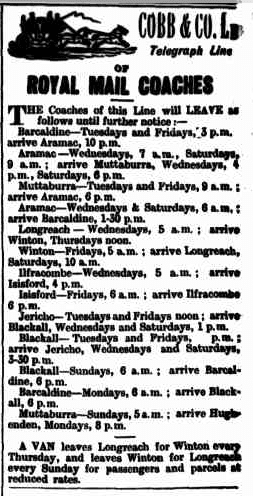
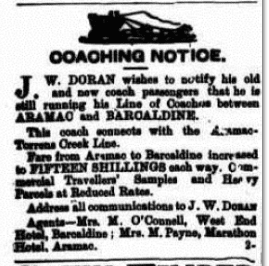
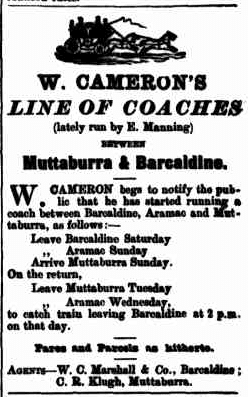
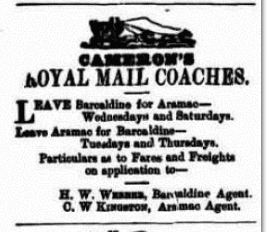
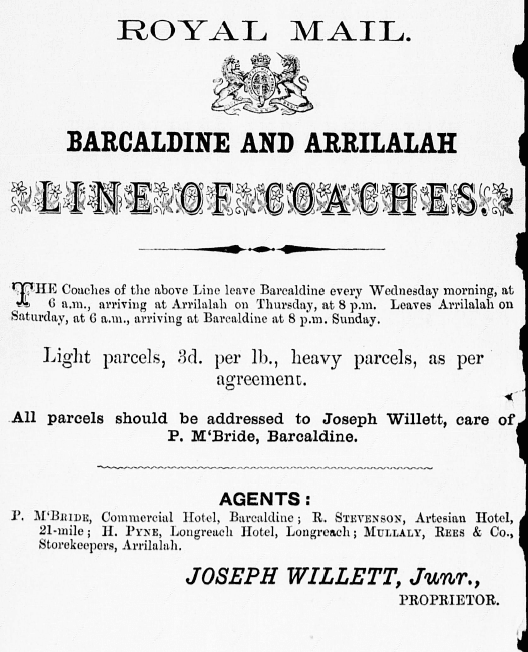

Motor Coaches and Buses
By 2008, availability of public transport varied from time to time but was always reliable between Mt Isa and Brisbane by coach every day. Greyhound Coaches and Bus Queensland are the current operators. The Longreach/Rockhampton route has had a more spasmodic coach service.
Motor Vehicles
The first cars appeared in the district in from about 1910. In 1911, A. M. Ferguson made a trip to Aramac in his ‘splendid new Napier’ with the help of a chauffeur, Barney McCabe. The 40 mile journey was made in three hours. In the same year a garage to hold seven cars was built behind the Shakespeare Hotel and W. Walker advertised a car for hire in the Champion.
In 1913, J. Allitt opened the town’s first motor garage on the north side of town. It had a concrete floor, wide doors, and ‘cupboards to hold the many little spare parts needed for repairing motors’.
There were also many references to ‘furious’ driving in the streets and mishaps were often cited. While horses, goats, children, cyclists and dogs shared the streets without standard traffic rules, swerving to avoid collisions in the sand caused many an upset. One of the first was a crash into a verandah post of the Shakespeare Hotel in November 1914. The driver, Campbell Fairley, engineer of the water scheme, was not injured but his passenger, C. H. Fysh, Shire Clerk, suffered a cut head.
By 1925 there were many motor cars in the area. The first petrol bowsers were installed by McEffer and Smart at their garage on the north side in 1926, the ‘much talked of petrol bowsers or kerb side pumps’. A tank of 620 gallons supplied the fuel to a structure 7 ft. 6 ins. high with a frosted Shell sign above (Hoch, 2008, p. 83).
In 1940, Whyte’s service station in Beech Street was destroyed by fire but rebuilt.
Barcaldine Vulcanising Works claimed there was ‘not a car on the road that could not be fitted from stocks’.

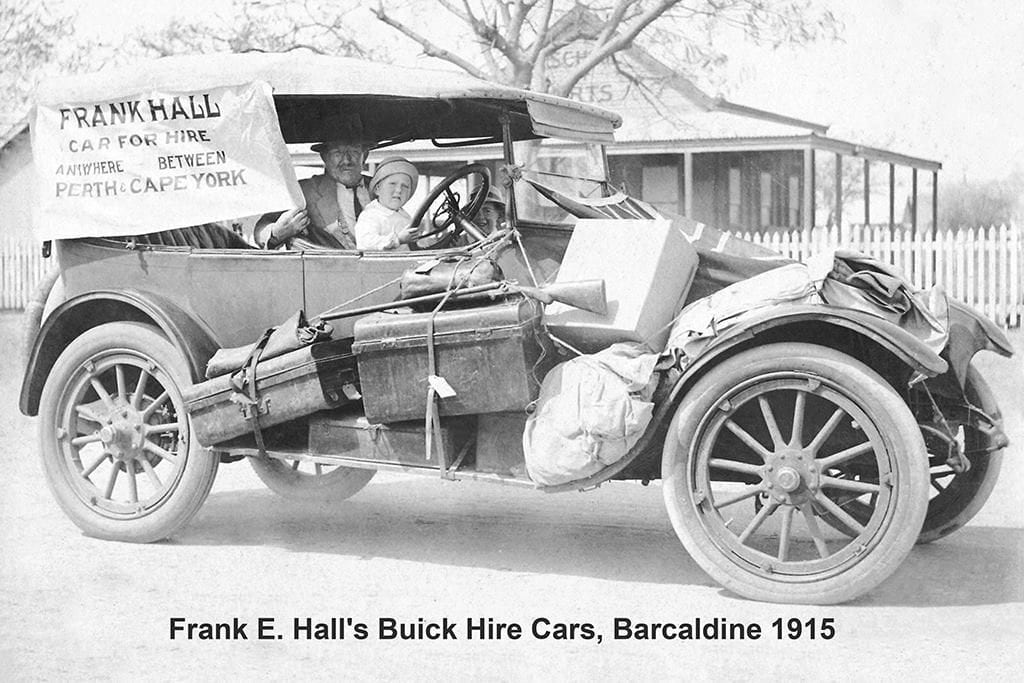
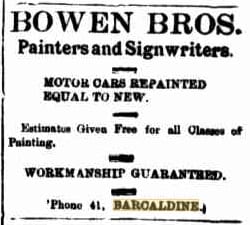
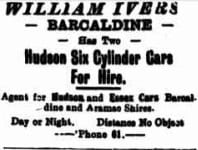
Feats of early motoring adventures were commonly reported in the Champion.
The first motor transport of sheep was claimed to have taken the form of a daring experiment when, in the drought of 1915, J. McNally of Bandon Grove and Balacava saved almost 4,000 ewes by moving them to agistment at Stonehenge on a motor lorry. The sheep were transported in three decks, two layers lying down, one standing, by lorry owner, Bill Naylor. At a cost of £100 per 1,000 sheep, Naylor made 39 trips, two per 24 hours over an average distance of 70 miles. There were few losses in the stock, then valued at £4,000.
H. D. Avery, a ‘well known and fearless motorist’ drove a Studebaker Standard 6 touring car from Longreach to Barcaldine and back in three hours and four minutes in August 1925. The road was a blacksoil track with many gates. Avery took a gate opener and would have won his bet (to make the drive in under three hours) if he had not had to change a tyre. Onlookers stated that he travelled a mile a minute on the Ilfracombe to Longreach home stretch.
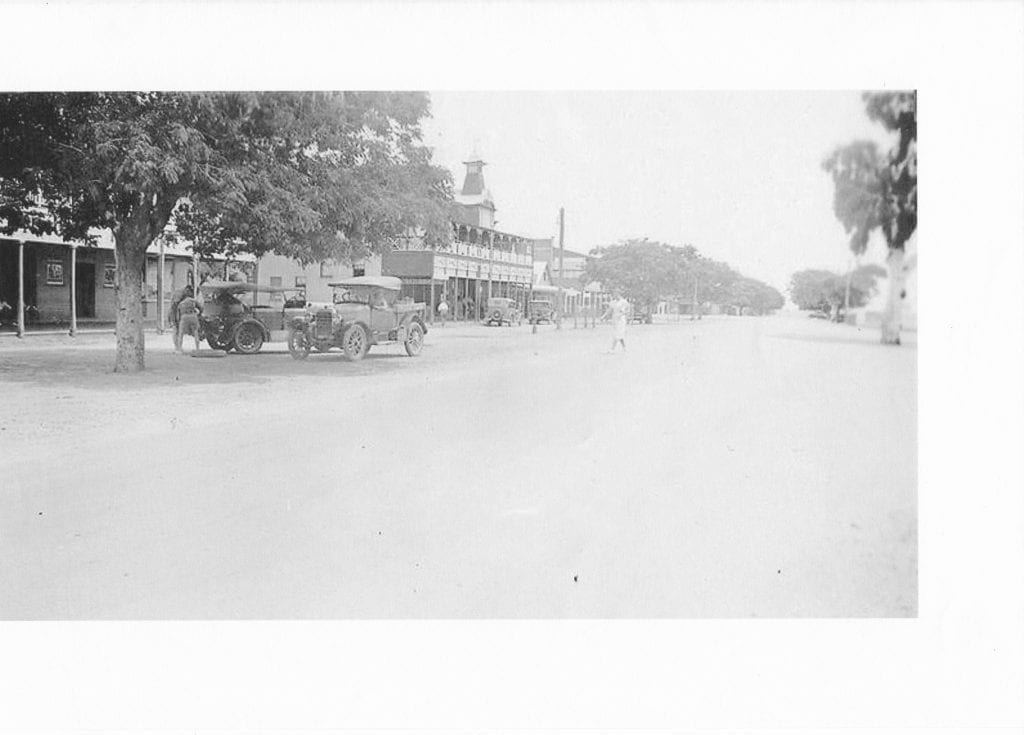
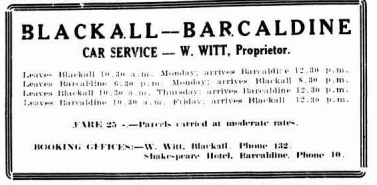
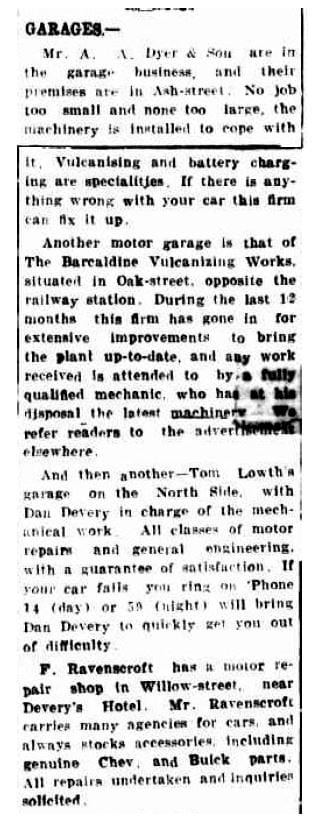

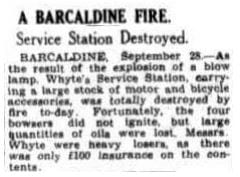
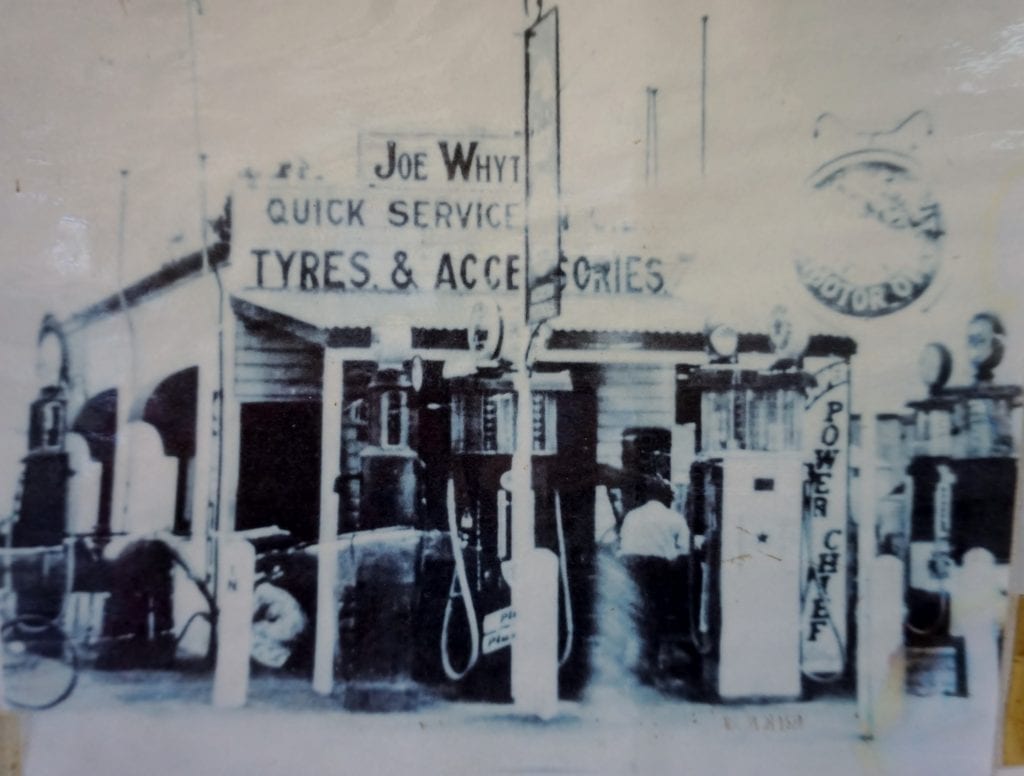
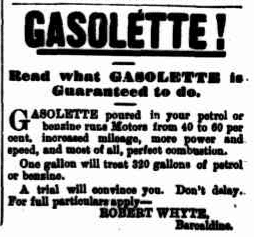
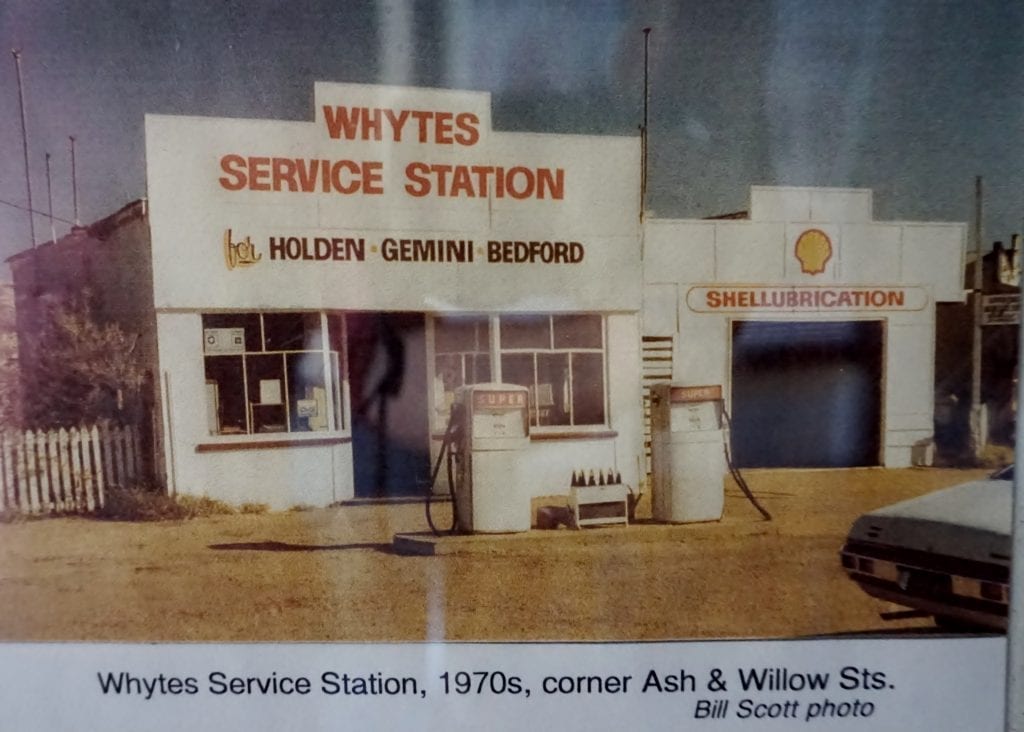
School Buses
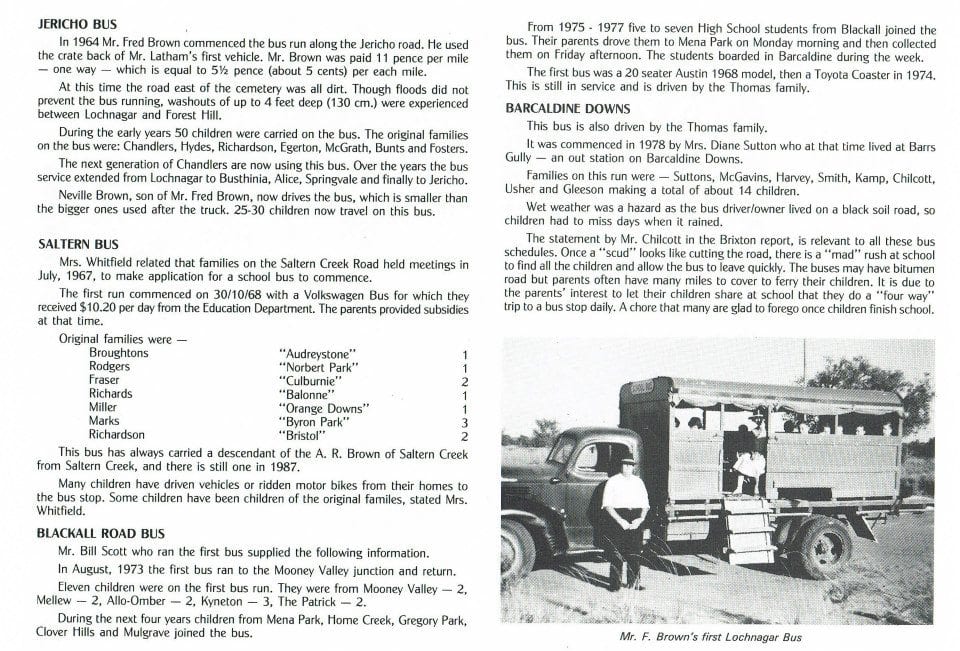
Ambulance
Transport by ambulance for those needing medical attention was non-existent until after WWII. In March 1940 a request from the ALP to the council was refused because the expense was considered ‘unwarranted’. The service was established about 1948 with the Fire Brigade building used as an office and L. Gale appointed as a driver. In January 1950 his prompt response to every call was commended in the Longreach Leader.
